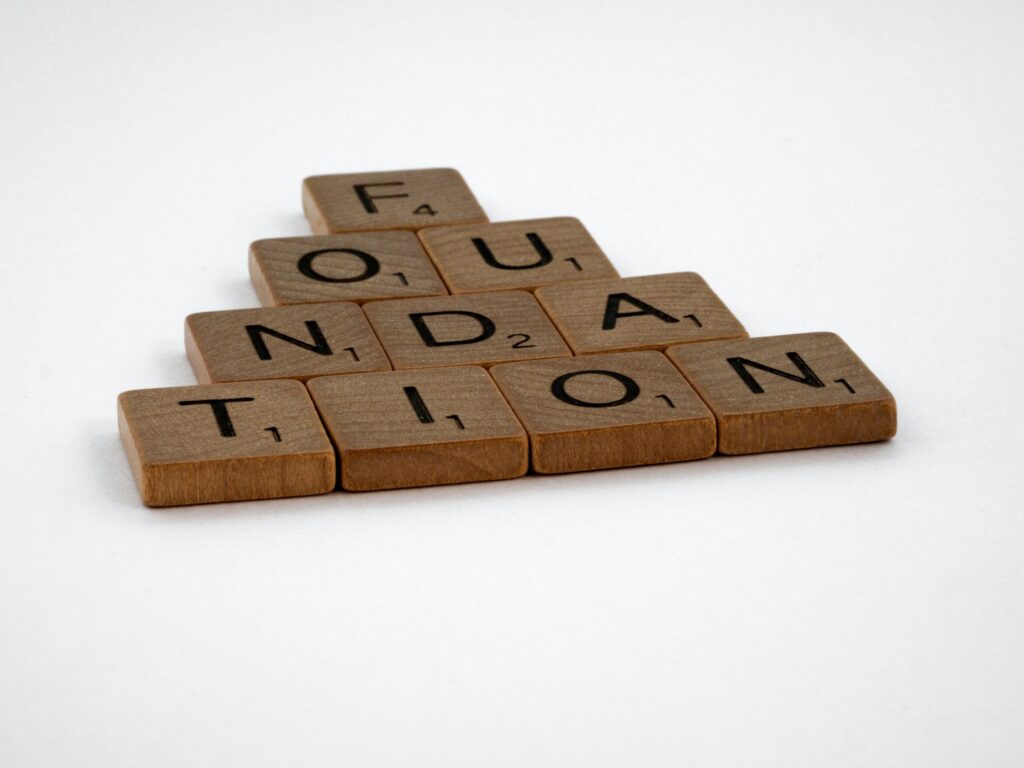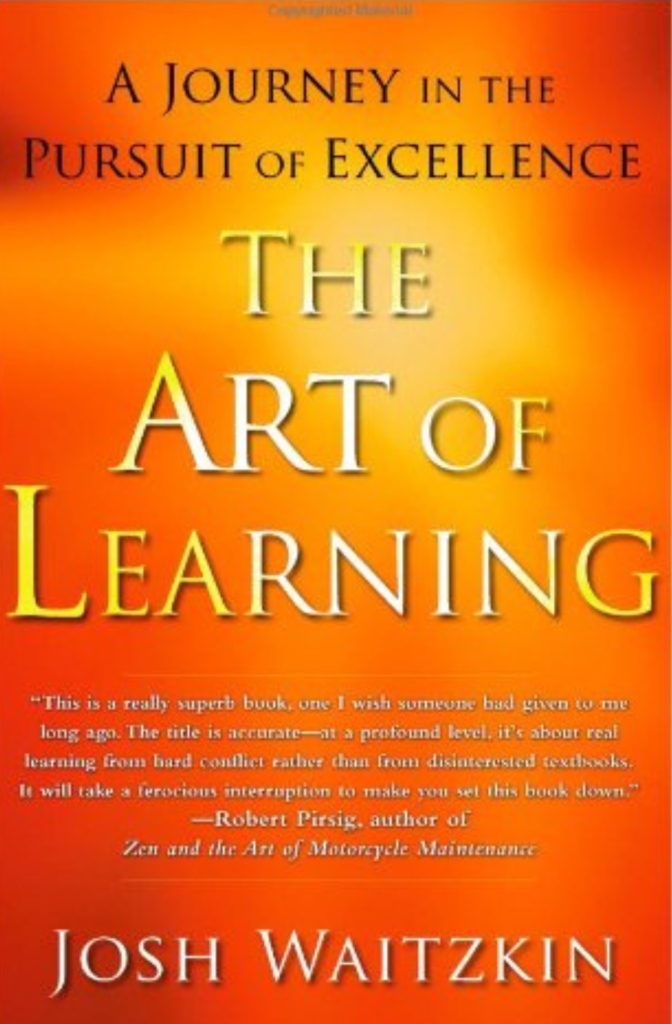The Art of Learning was written by Josh Waitzkin and published on 8th May 2007. The author tells a magnificent story about personal development and shares the concepts of learning and performance that drove him to the top. The author also explains how to embrace defeat and make mistakes or failures work for you. Also, the book describes how you can channel your emotions into creative fuel.
HOW THIS BOOK HELPED US?
The book showed us that it’s through maximising the learning from our failures or mistakes and avoiding repeating them that we can get to the top regardless of our different fields. From the book, we learnt that even when angry at people, we can still channel those emotions and use them in our creativity.
THE BOOK EXPLAINED UNDER 60 SECONDS
Josh’s Art of Learning explains the science of becoming a great performer based on Josh Waitskin’s rise to the top in chess and Tai Chi. The book also shows you the right mindset, genuine approaches to practice and how to create and build the habits of a professional.
TOP THREE QUOTES
- “The key to pursuing excellence is to embrace an organic, long-term learning process and not to live in a shell of static, safe mediocrity. Usually, growth comes at the expense of previous comfort or safety.”
- “Growth comes at a point of resistance. We learn by pushing ourselves and finding what lies at the outer reaches of our abilities.”
- “It” s rarely a mysterious technique that drives us to the top, but rather a profound mastery of what may well be an essential skill set.”
BOOK SUMMARIES AND NOTES
Chapter One: The Foundation

Innocent Moves
Despite the outside pressure, Bruce kept me out of tournaments until I had played chess for about a year. Bruce and my parents wanted my connection with the game to be more about learning and passion in the beginning. They were particularly uncertain about exposing me to the ruthless pressures of competitive chess. Bruce had to teach me to be more regulative without reducing my love for chess or crushing my natural voice. Most teachers have no affinity with this balance but force their students into cookie-cutter moulds. Many teachers and parents think that competition is bad for children. However, I’m afraid that’s not right. Enough competition helps children handle obstacles in their lives.
The truth is, even failure has a good side. Loss helps you realise your weaknesses, and you focus on improving them. To improve your efficiency, always take up the more vigorous opponents. Investing in failure creates opportunities for learning and improvement. When a child loses, parents should ensure that the kid understands that it’s okay to feel and be disappointed. Also, parents must show their children how proud they are to help them find ways to improve.
Losing to Win
Josh found himself competing in the national championships and trounced the first six opponents. He got into a game with a skilled opponent who trapped him and slowly straightened out his game. Josh, a boy who considered himself unbeatable tied his self-confidence and worth to that idea. When he lost at the championships, he was crushed. Confidence is essential for a great competitor, but overconfidence is fragile. When things go out of control, there is hardly any natural resilience to fall back on. Josh and his family would go for extended trips to the waters annually to escape the pressure of competition. These little breaks from the competition are essential for success. When Josh lost at the national championships, he went for a holiday off the sea. There were many years when leaving Newyork felt was career suicide. My chess opponents were having lessons and competing in weekly tournaments while I was cruising on a boat. But this would help me develop new ideas, positive energy, and determination. The lessons you learn while on your way to success are worth much more than the glory and accolades. Likewise, painful losses can be of much more value than wins.
Two Approaches to Learning
Entity vs Incremental theories of intelligence. Children who approach learning with the entity theory have been influenced by their parents or guardians and teachers to believe that they’re brilliant at a specific skill and to accredit their success or failure to an established and unchangeable level of ability. These children usually see their intelligence in a particular discipline as fixed, something that can not evolve. Well, incremental theorists adopt a contrasting modular of learning. These children tend to describe their results with statements like “I got this because I worked very hard to see it through”, or maybe I should try harder or a different approach. Children with the incremental learning theory know that with hard work, even a complex material can be grasped step by step. When challenged with difficulties, incremental theorists will rise to the level of the game and use that challenge as a learning opportunity.
In contrast, entity theorists will quit, which will be a life scratch. Children who associate success with hard work tend to have a “mastery-oriented response” to challenging situations. In contrast, children who see themselves as just plain “smart” or “dumb,” or “good” or “bad” at something have a “learned helplessness orientation.”
Favourite Quote of the Chapter: “The key to pursuing excellence is to embrace an organic, long-term learning process, and not live in a shell of static, safe mediocrity. Usually, growth comes at the expense of previous comfort or safety.”
Chapter two: My Second Art

Beginner’s Mind
At 18 and living in Eastern Europe, Josh read On the Road and The Dharma Bums, beginning a journey of the philosophies of Zen Buddhism, which later led him to the Tao Te Ching. The Tao Te Ching influenced him greatly and seemed to echo many of the more esoteric and philosophical lessons he had learnt from playing chess. The Tao Te Ching’s wisdom focuses on releasing obstructions to your honest insight, seeing false constructs for what they’re and leaving them behind. Eventually, the Tao Te Ching led him to Taoist philosophy and its physical embodiment, Tai Chi. With the physical expression of Taoism, Josh could read the human body the way a chess master reads a chessboard, locating the exact minuscule spot of tension in his students. After months of practice, Josh generated a deep internal awareness, a sense of connectedness and an appreciation for the type of elusive instruction that his teacher preferred. As he progressed, he learned how to systematically put the damaged elements of his being back together. On a deeper level, the practice had the effect of connecting disparate aspects of my being. My whole life, I had been an athletic guy who practised a sport of the mind. As a boy, I devoted myself to my love for chess. My passion was unfettered that body and soul were united in the task. Later, as I became alienated from chess, my physical instincts contradicted my mental training.
Investment in Loss
The martial philosophy behind push hands, in the terminology of Tai Chi, is to overcome a thousand pounds with four ounces. Don’t encounter your opponent but instead blend with his energy, yield to it and defeat with softness. The problem is that we are conditioned to strain and resist incoming hostile forces, so we have to learn a new physiological response to aggression. It’s okay to roll back and meet force with force but to master Push Hands, you must invest in losses. By getting a beating up until you learn not to make that mistake. The little guys must push the bruiser for a while until he knows how to use more than brawn. Investment in loss is surrendering yourself to the learning process. It is not so difficult to have a beginner’s mind and be willing to invest in defeat when you are a beginner. Still, it is much harder to maintain that humility and openness to learning when people are watching and expecting you to perform. My response is that it is essential to have a liberating incremental approach that allows for times when you are not in a peak performance state. We must take responsibility for ourselves and not expect the rest of the world to understand what it takes to become the best we can be.
Making Smaller Circles
The differentiating factor in the chase of success is depth over breadth. The learning principle is to dive into the complex mystery of the micro so you can comprehend what makes the macro tick. The problem in creating this approach in the learning process is that you’re stipulated to bounce around the surface of knowledge. You are always looking for new things instead of immersing deep enough in a topic to internalise it fully. The path to success is to completely master the essentials at the deepest level possible instead of amassing a range of ancillary abilities. This is witnessed in martial arts when practitioners invest in learning many flowery movements without mastering the basic principles that make the movements effective.
In contrast, Josh’s approach improves in Tai Chi was to refine the most straightforward techniques. By repeating such small movements, he would internalise the principle of movement and apply it in other parts of Tai Chi. The hey was to realise that the principles of making one small technique were the same basics that drove the whole extensive system of Tai Chi. After you approach learning in this way, you can begin to apply the internalised principle to your entire range of tools and techniques.
Favourite quote of the chapter: It is rarely a mysterious technique that drives us to the top, but rather a profound mastery of what may well be a basic skill set.”
Chapter Three: Bringing It All Together

The Power of Presence
The ability to be clearheaded, calm when the walls are closing in on you and to be at peace with the increasing tension differentiates the great and the mediocre. To demonstrate composure under pressure, you must learn to be deeply present in the day-to-day. If deep, fluid presence becomes second nature, then life, art, and learning take on a richness that will continually surprise and delight. Those who excel maximise each moment’s creative potential. For these masters of living, presence in the day-to-day learning process is akin to that purity of focus others dream of achieving in rare climactic moments when everything is on the line. The secret is that everything is always on the line. The more present we are at practice, the more present we will compete in the boardroom, the exam, the operating table, and on the big stage. Suppose we have any hope of attaining excellence, let alone of showing what we’ve got under pressure. In that case, we have to be prepared with a lifestyle of reinforcement. Presence must be like breathing.
Searching for the Zone
To become world-class, Josh had to learn to maintain focus and operate from a calm mental state for an extended period. The ability grew in stages. In the beginning, he battled with getting a guide. Then distractions interrupted the focus, regulating himself not to spend all of his mental energy at once. Eventually, the time came when he had to learn about how to have long-term, healthy and sustainable performance. Josh had to turn to a performance psychology training centre to learn these skills. While there, he began to see how universal performance and learning were at their best. Players can focus more effectively when they come back by taking small breaks in the game to relax. An unconscious mind is a powerful tool, and learning to relax under pressure is a crucial first step to tapping into its potential. Interval work is a critical building block to becoming a consistent long-term performer. Suppose you spend a few months practising stress and recovery in your everyday life. In that case, you’ll lay the physiological foundation for becoming a resilient, dependable pressure player. The next step is to create your trigger for the zone.
Building Your Trigger
One of the most significant barriers to relaxation for any person is the fear that they won’t recover their focus if they relax. This results in continuous intensity and mental burnout. Sustained peak performance is only achievable when it is emphasised by periods of rest and stress, rather than maximising your ability to get back from rest to explosive focus when the time comes. The critical part of this approach is learning to wait. Many people live their lives waiting for their big breakthroughs or expecting their fate to materialise and become evident at some point in the future. Instead, your waiting must be somewhat instilled with involvement. Josh puts it like this: “I believe an appreciation for simplicity, the everyday – the ability to dive deeply into the banal and discover life’s hidden richness – is where success, let alone happiness, emerges.”
Favorite quote of the chapter: Instead of running from our emotions or being swept away by their initial gusts, we should learn to sit with them, become at peace with their unique flavours, and ultimately discover deep pools of inspiration.”
HOW THIS BOOK CAN HELP SOFTWARE DEVELOPERS
“The Art of Learning” by Josh Waitzkin is a book that explores principles and techniques for mastering any skill. The insights and strategies shared in the book can be valuable for software developers who want to improve their skills and achieve mastery in their craft. Some of the key takeaways include the importance of deliberate practice, the power of mental models, the value of continuous learning, and the need to embrace challenges and failures as opportunities for growth. By applying these principles, software developers can enhance their abilities and reach new proficiency levels.


